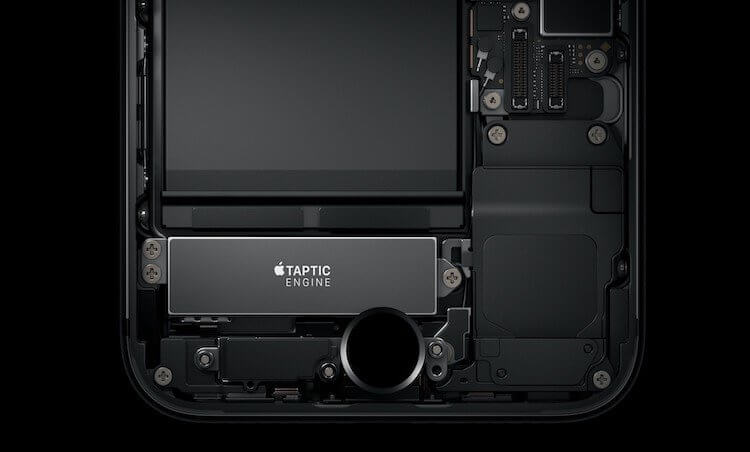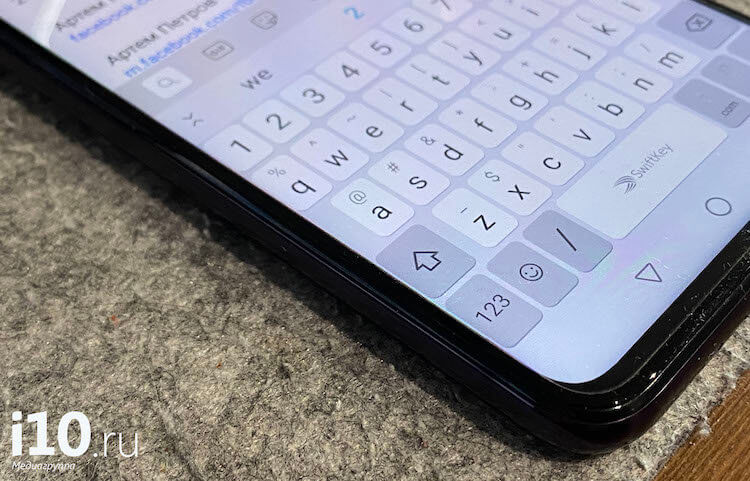Remember how many times you had such that you saw a smartphone in the picture and you really liked it, and then when you met in person, there was a feeling “oh, that's what you are”. All due to the fact that the tactile feedback of the device is very important to us. For the production of flagships, companies spend millions and tens of millions of dollars on design and materials development. Weight and weight distribution are also important. All this greatly distinguishes inexpensive smartphones from expensive ones. When a device costs 5,000 rubles, there are significantly fewer requirements for it, and when it costs 90,000 and performs approximately the same functions, albeit better, you already want everything to be pleasant. Sometimes manufacturers go for tricks and offer other options to enhance tactile sensations.

Not everyone needs tactile feedback.
What types of vibration motors are there in the phone?
There's even a term for device feedback – Haptic. We usually don't talk about it, except when the smartphone manufacturer has done its job very well or, conversely, very badly. True, this applies primarily to the built-in vibration motor, which was very hotly discussed a couple of weeks ago in our Telegram chat.
Personally, I do not like it when the motor follows my movements and accompanies all my actions with the smartphone. If I touch the keyboard and the smartphone vibrates, I still have no tactile feedback. In my case, it only causes rejection and a feeling when something happened, but at the wrong time. I always try to disable this feature first, and yesterday I already told you how to do it.
Sometimes I can make a favor for the Taptic Engine, which is found in iPhone and Apple Watch. It is really cool and conveys a tactile response, and not just vibration according to the principle of “the rich, the more happy.” That is, it simply includes what he has, although it is necessary for something completely different.
The difference between these two types of vibration is that a conventional vibration motor has a shaft with an eccentric (off-axis weight). This weight gives vibration. The Taptic Engine uses a weight that moves back and forth, thereby creating not just “bzzzz”, but a real wave impact. In fact, the difference is felt more than seriously. I act on the principle that if there is no normal response, then no response is needed. But a huge part of users is also happy with the usual vibration motor. The only question is why?

This is what the Taptic Engine looks like.
Why is phone feedback important?
The display of a modern phone is a piece of hard glass or plastic. It doesn't flex or buckle when you click on an icon or type a message, so the tactile response itself is zero. Your finger hits a piece of glass and that's all you can feel. You will not have the feeling that you have pressed something.
Many, like me, are looking for a way to turn off tactile feedback, especially to the keyboard, since not all smartphones can sync the touch feedback.
Why, then, are there a huge number of those users who, not only do not want to disable the recoil, but, on the contrary, enable it when it is disabled by default. The answer is simple – they are kinesthetic.
It is important for them not only to watch or listen, but, first of all, to feel. For them, both the material of the case and the very recoil are important.
It seems to them that if there is a button, then it should click when pressed. For the most part, that's why they include keyboard response.
How vibration feedback works
It's simple. In order for the vibration response to work, you need to apply voltage to the motor and it will vibrate. You just need to understand all the difficulties. When vibration occurs during a call or an incoming message, everything is relatively simple and time delays even in a second do not mean anything and do not represent any problem. It's another matter when vibration accompanies screen touches or gameplay.
The motor itself does not understand that the user has touched the screen or that they have hit the ball in play. For this, there is software that must process the information so quickly and send a signal to the vibration motor so that the user does not feel a delay. The difficulty is that the motor can spin up quickly. Although, they are now powerful and there are no problems with that.

It is difficult to generate a vibration response during printing.
This is important due to the fact that the human brain understands when he touched the screen, and exactly in this fraction of a second, a response should occur. Otherwise, it will turn out to be something like when you hear your voice in the headphones with a delay and very unpleasant sensations arise.
As a result, the processor is responsible for the operation of the motors. Sometimes this function is carried out on an additional chip to make the response speed even faster. The problem is that it is impossible to predict the pressure in advance, so you need to work very quickly.
Another thing with games. Slightly long delays are acceptable there, but they should still be in milliseconds. On the other hand, it is easier to predict the need for vibration there. For example, before hitting a ball or hitting a wall in a racing simulator. True, not all manufacturers bother so deeply.
Should the phone vibrate
I believe that everything should be on time. The vibration of the phone is important at the moment when it needs to draw attention to itself. In other cases, this is superfluous. It's very difficult to make real tactile feedback anyway. Especially since the motor needs to be in the right place, but usually it gets a place in the corner, since the middle is occupied by the battery.
If you like it when your smartphone vibrates when you press, there is nothing wrong with that. It's like to love or not to love green – everything is individual. That is why I want to hear your opinion. Let's do our research on love or non-love for tactile feedback. Write about it in the comments and answer the question below.
